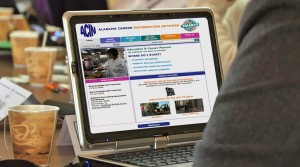In his second State of the Union Address, President Barack Obama set a broad agenda for improving the economy and maintaining the United States’ status as a global super power. Calling this our “Sputnik moment,†the President urged Congress, private businesses and the American people to work together to out-innovate, out-educate and out-build the rest of the world.
Recognizing that the world has changed and that a high degree is no longer sufficient to earn a family sustaining wage, Obama focused on the ways that education can help turn around the economy. First, he cautioned against “pour[ing] money into a system that’s not working†and highlighted the ways that his Race to the Top grants have reformed education through the adoption of new standards. He also stated that Race to the Top should be the foundation for the reauthorization of No Child Left Behind this year. Among the other education priorities that he addressed were: raising the status of the teaching profession, increasing the number of STEM teachers, making postsecondary more accessible and affordable, and training individuals for new careers and new jobs.
He also stressed the importance of community colleges in meeting the demands of out fast-changing economy and singled out Kathy Proctor, a student at Forsyth Tech in North Carolina who is earning her degree in biotechnology at the age of 55 because the furniture factories in her town have disappeared.
However, despite the President’s call for greater investment in things like innovation, education and infrastructure, last night he proposed a five-year freeze on non-defense discretionary spending beginning this year. This comes after House Republicans have pledged to return appropriations levels to FY08 or FY06 levels. So while we don’t know what spending levels will look like after the CR expires in March, it seems certain that there not be any funding increases this year.
On a brighter note, Brandon Ford, a junior at the Academy of Automotive and Mechanical Engineering at West Philadelphia High School was invited to be a guest in First Lady Michelle Obama’s box last night. Brandon was recognized for his participation in the Progressive Automotive X PRIZE competition, in which teams from across the globe compete to create production-ready, highly fuel efficient vehicles. Brandon and his team went up against corporations, universities and other well-funded organizations from around the world, advancing all the way to the elimination round. Congratulations, Brandon!


 udent achievement.
udent achievement.